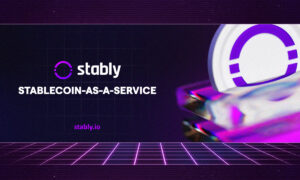Stablecoins are digital assets similar to Bitcoin and Ethereum, except that they derive their value from stable assets such as currencies or physical commodities like Gold. In the cryptocurrency space, most stablecoins are pegged to the United States Dollar. Hence they take a similar acronym to USD. However, there are other stablecoins with unique names and tickers. The idea of stablecoins was born out of the need to protect investors from constant volatility. If you were to take cash back to the back and bring it back into the market on every cryptocurrency investment, the delay in the process could cost you lots of opportunities. A series of research at W3G Capital shows that stablecoins help crypto natives and extra cautious market participants stay in the game without returning to a centralized system. Other use cases of stablecoins also range from complex yield farming to lending and trading.
The Types of Stablecoins
Studies show that it can be fiat-backed, asset-backed, crypto-backed, algorithmic, or rebase. Fiat-backed stablecoins are pegged directly to a currency in the real world, such as the Japanese Yen, United States Dollar, and the EU’s EURO. The issuer of these currencies often keeps an equivalent amount of the paired currency for any token issued. Backings of most fiat-pegged stablecoins usually range from actual cash to government-issued bonds and sometimes commercial papers, which are unsecured debts. Therefore, holders of digitally-issued tokens are confident that the asset they hold can be exchanged 1:1 for the underlying fiat currency according to the market value of the fiat currency at the time of the exchange.
Asset-backed stablecoins are pegged to commodities in the real world, such as gold. You can compare the value of an asset-backed stablecoin fiat currency under the gold standard. Being pegged to an asset such as gold, silver, rhodium, or palladium doesn’t mean holders can exchange these stablecoins for the underlying assets. The asset is only held in reserve by the issuing company that can sell the assets to pay the holders of the tokens in a generally acceptable fiat currency. Some issuers also offer directly pegged assets to their underlying precious metal reserve. The Paxos dollar is a good example of an asset-backed stablecoin.
Crypto-backed stablecoins are pegged to an underlying cryptocurrency. To maintain the value of these cryptocurrencies, the issuing protocol use overcollateralized lending. Users of issuing platforms can deposit an amount of cryptocurrency based on the current market price, receiving a lesser value immediately. The borrowed assets are often used to execute complex derivatives and other trading strategies while the user funds remain retrievable. Maker DAO, for example, issues the DAI stablecoin at a 175% over-collateralization rate for Ethereum. The protocol allows users to deposit other cryptocurrencies at a higher collateralization rate based on volatility. The popular Avalanche lending protocol, Abracadabra finance, issues MIM, the magic internet money, using a similar collateralization model.
Algorithmic stablecoins are a deviation from crypto and fiat due to centralization and issues with using the same centralized systems to determine the price of stable assets. Proponents of these stablecoins believe that the value of stable assets should be determined objectively by an algorithm. Most examples of algorithmic stablecoins, such as Rai, and Fei, depend on an algorithm for protocol decision market stabilization and pegging. The problem with these coins is that many are vulnerable to a death spiral resulting from selling pressure. Protocols like Frax have improved and sustained their system by using hybrid, fiat, and algorithmic collateralized stabilization mechanism using a proportional derivative, integral controller.
Rebase tokens such as Ampleforth, Basis cash, and Empty Set Dollar is more like wild experiments. Still, at a basic level, they maintain stability by using complex models, which includes bonds and native token, to keep the stable asset pegged. These tokens are highly prone to the death spiral problem because bonders or holders take some discount to stabilize the price. Today, the three most popular stablecoins given below are the best to keep funds, especially in the interest of new users still trying to wrap their heads around the happenings in the space. Based on research at W3G Capital, we have ranked the best stablecoins in descending order from the best at #1 to the third on the list, USDC, at #3.
BUSD
Binance USD is a US dollar-backed stablecoin resulting from a partnership between the leading cryptocurrency exchange, Binance, and a leader in the stablecoin space, Paxos. It is a fiat-collateralized stablecoin that is pegged 1:1 to the US dollar. It offers users the ability to transact with other digital blockchain-based assets. As a stablecoin, BUSD minimizes the volatility risks typically associated with cryptocurrencies. It was founded to improve the decentralized financial ecosystem with a frictionless global network that allows digital assets to add accessibility, flexibility, and speed to transactions at scale. The tokens are ERC20 tokens issued on the Ethereum blockchain. Each BUSD is backed by 1 US dollar held in FDIC insured account owned by Paxos. Since the launch of this stablecoin, the platform has expanded to a current market capitalization of 21.7 Billion US dollars.
USDT
Tether Limited initially set out to create a token that is pegged to the US dollar but issued on the Ethereum blockchain. To protect against volatility, cryptocurrency users need a stable asset and want to be in crypto. Tether collects fiat from these users or potential users and issues a stablecoin backed by the value in their reserves. If you come back to redeem your Tether for cash, they simply destroy the Tether and give you cash. Tether only issues as much as they hold in their bank account. In theory, the token is minted whenever you request it using fiat. The problem with Tether, however, is that there has been a lot of skepticism about its actual asset value in proportion to the number of tokens in circulation. Audits of Tether have also been a bit vague lately due to legal and other issues. However, the company recently stated that its stablecoins are backed 100% with government-issued securities and cash. USDC is the first market capitalization in stablecoin due to its existing popularity.
USDC
USDC was launched in 2018 by CENTRE, a collaboration between Circle and Coinbase. To stay stable, USDC is backed by the US dollar just like USDT, and at the time of writing this article, it has a total market capitalization of about $44 billion. The stablecoin has been praised for its strict transparency and auditing, published weekly and monthly. The platform’s auditing reports also show the amount of cash and near cash that backs all issued USDT. The stablecoin also enjoys backing from some of the biggest legitimate companies in the United States.
What Led to the Fall of Luna?
UST is the stablecoin issued by Terra, the parent company of Agora and creator of LUNA. While the economics of LUNA seem a bit complicated from afar, it mostly uses an algorithmic rebase model. To keep UST at $1, Terra economics has constant arbitrageurs that can buy UST using LUNA at a constant rate of $1 for each UST. If UST falls below a dollar, there is an opportunity for arbitrageurs to buy below a dollar from the market and redeem it for exactly $1 on the Terra protocol creating a buy pressure in the market, which in turn leads to a repeg of the token to the actual price. When the price goes above a dollar, arbitragers redeem on Terra protocol and sell to the market, bringing the price back down. The LUNA death spiral was triggered by about a billion-dollar arbitrage which also leverages Anchor protocol’s high interest causing unimaginable sell pressure and the eventual crash. The developers quickly salvaged the situation with the launch of LUNA 2.0, but the losses suffered were immense due to the trust reposed in the stable asset. The future of algorithmic and rebase stablecoins are still unfolding, and as we shift towards complete decentralization, protocols like Frax and newer innovations may become the new normal.
Conclusion
Information from W3G Capital affirms that stablecoins allow offramp and onramp access to traditional cash, making crypto work and serving as the prime mover of DeFi. With stablecoins, cautious investors can get into the space and remain safe in times of wild volatility. Fiat-backed cryptocurrencies are the most reliable at this stage in the industry’s evolution. Although newer algorithmic stablecoins like Frax defy the odd using a complex mix of algorithmic and trust-based mechanisms. Such stablecoins may become the norm in the future. Still, at the moment, centralized stablecoins like BUSD, USDT, and USDC are the most reliable and guaranteed if the investor is to keep a reliable exit strategy in mind.
Nonetheless, the volume of activities and market share of Binance, the premier cryptocurrency exchange in the crypto space, makes its BUSD are surer bet than the others. Aside from Binance’s influence, BUSD is also transparent in its dealings, and most of its assets are backed by actual cash. USDT remains the most used and acceptable token across the crypto space, with the highest market capitalization of any stablecoin.



































